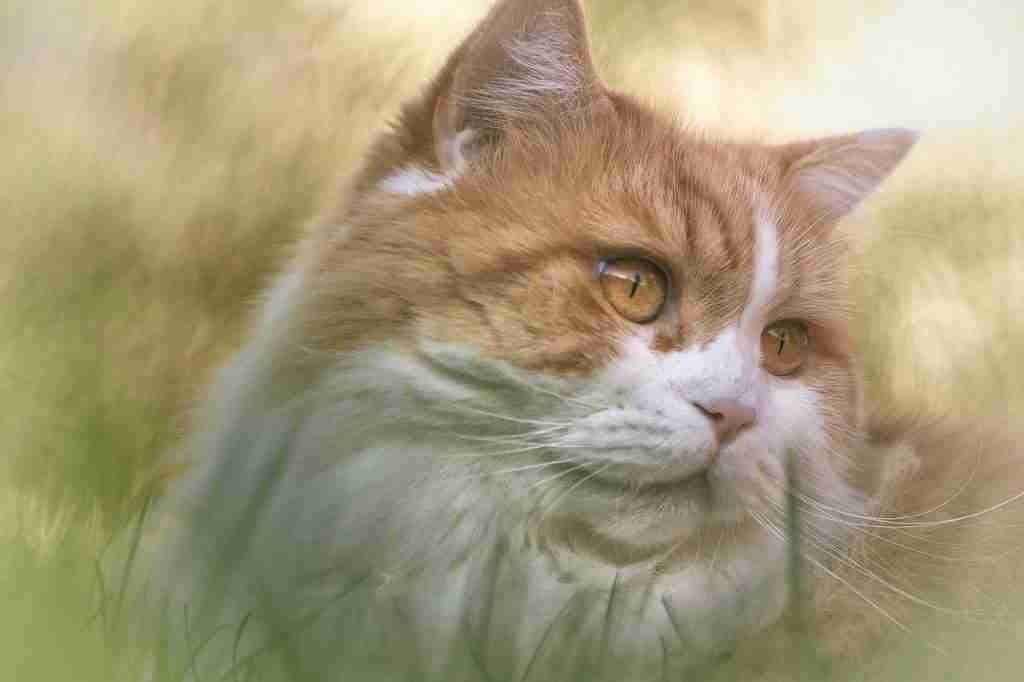Cousins to British Shorthair, British Longhair cats are the perfect kind of sweet-tempered, adorable pets you could want in a home. As their name indicates, they look just like Shorthairs, sharing the same elegance, but only with longer fur. Read on to learn more about these wonderful cats…
It is not hard to fall in love with these peaceful and playful felines. Even though their popularity is rapidly rising, they are still very rare in the United States. It is considered one of the newer breeds, having been recognized only a century ago.
There are so many different reasons that make these cats great for families with children in them. If you are curious to know more about them, read this article to know all there is to know.
Breed Temperament
A British Longhair is lovely to look at, with many unique features making it stand apart from others. Because of their docile, easy-going nature, this cat breed is very peaceful and barely shows any sign of aggressiveness.
It makes them not only suitable for families with young kids but also the elderly. They can become the perfect companion, happily attached to their guardians.
British Longhairs are known to cohabit happily with other pets, both felines and canines. They can be very assertive and independent. Their aversion to loneliness makes it easy for them to assert themselves amongst others and become one of the family.
However, these cats like to have boundaries; they want to be respected. They like having personal space, not being held tightly, choosing when to receive affection, etc. It is important to encourage movement and playtime with keen monitoring of their food intake as their laid-back and almost lazy nature means they can easily gain weight, especially if neutered.
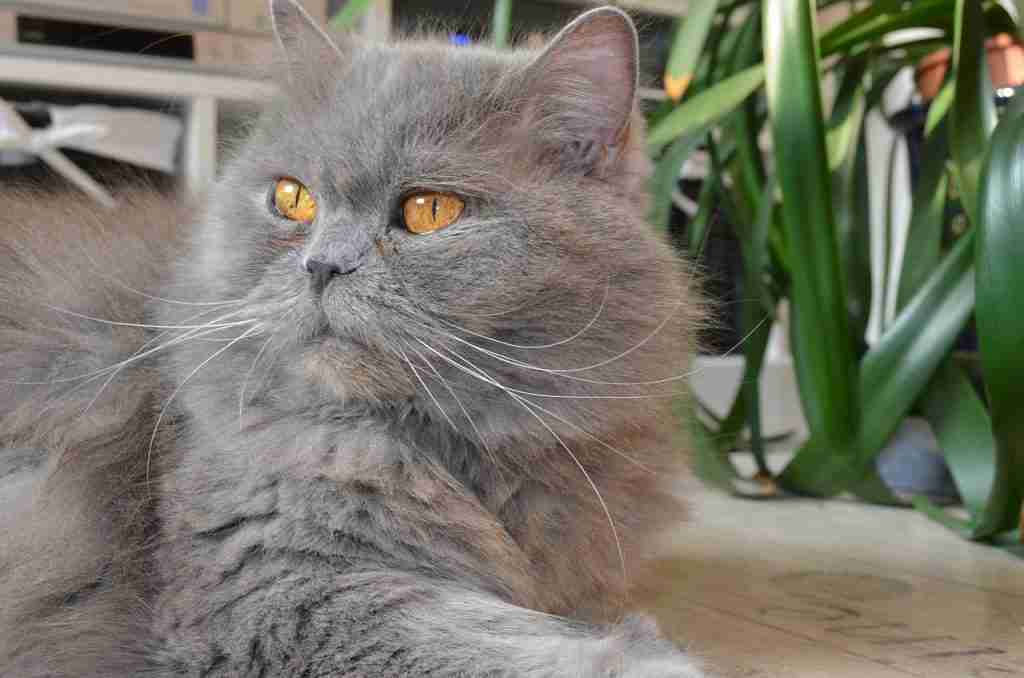
Overall Appearance
As a mix of British Shorthair and Persian, they have a medium build, with a short neck, muscular back, and a broad chest.
Their legs are straight and short, extending to solid round paws. But their most adorable feature is their round head, with strong cheeks and a short nose. They resemble living, breathing teddy bears with their full cheeks and an endearing charm that you cannot help but adore.
British Longhairs have beautiful large, round eyes. The eye colors, however, may vary from blue, orange, and deep gold to copper depending upon the pattern and color of their coat, some solid white coat cats have odd-colored eyes! There are over 300 different coats and pattern combinations available in the breed standard!
These fluffy cats‘ coats are dense and straight, giving the coats added volume to make them appear bigger than they are. They are usually either longhair or semi-longhair. They should usually have a slightly thicker ruff, ear tufts, and britches. The coat patterns permitted for the breed include bicolor, tabby, calico, tortoiseshell, single full-colored, or colorpoint but with a thick undercoat.
Fortunately, they only occasionally shed, so it is easy to groom them. Longhair cats can be quite intelligent and slightly vocal, voicing out their opinions on different matters.
History
After World War I, British Shorthairs were facing a development recession. They had all but disappeared, but that did not stop their demand from growing across the entire UK. So, to save them, they were bred with other kinds of felines, such as Chartreux, Russian Blue, Burmese, etc.
One of the most popular cross-breedings occurred with the traditional Persian breed. The breeders wanted a stouter and round-face stock that the Persian could bring while keeping the characteristic short coat of traditional British Shorthairs.
However, their attempts often failed, they created many kinds of semi-long-haired specimens. These animals were unwanted and excluded and were given off as castrated collector’s pets.
When the population of British Longhair dropped dramatically after the Second World war, breeders had to begin hybridization again. Even then, medium to long hair kittens were abandoned and discarded, unaccepted for the registry.
Fortunately, TICA accepted these cats as British Longhairs under their own breed standard in 2009. After being recognized by multiple other breeding associations, they are now being purposefully bred to increase the gene pool.
However, the gene for long hair can be quite recessive and is transmitted and carried in an obscure way. This can cause long generational gaps in the production of longhaired cats.
On the other hand, shorthair cats can also carry this recessive gene and give birth to cats with long fur, even though both parents may have short coats – getting a British Longhair can be an event that relies on good fortune!
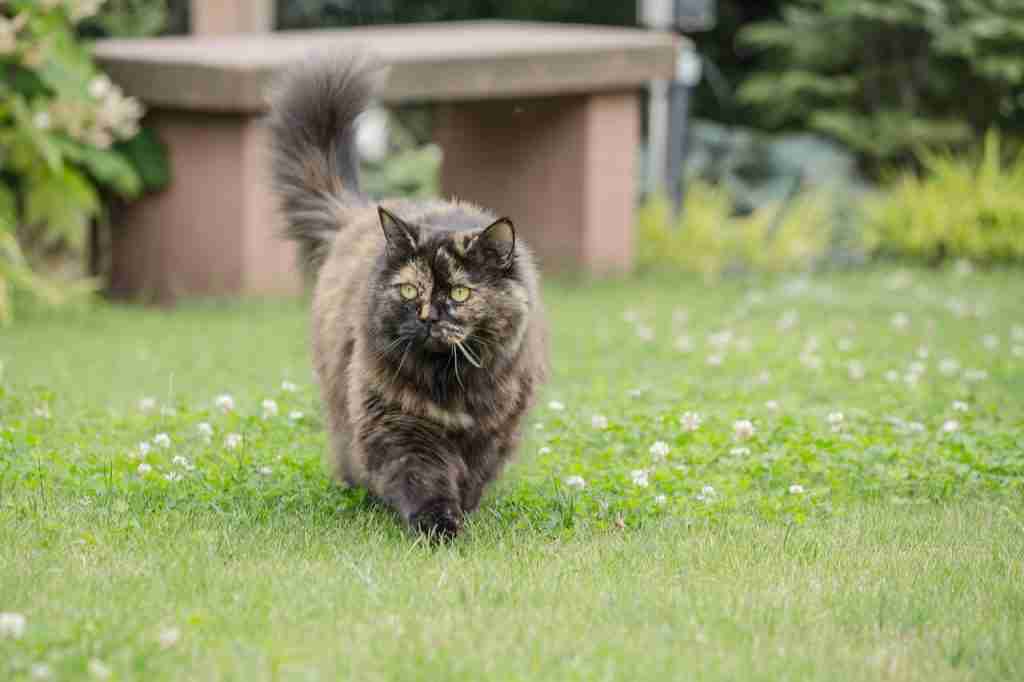
British Longhair Personality
If you want a docile cat, you can’t go wrong with a British Longhair. Their personality is just as sweet as their face, resembling living teddy bears. Their demeanor is calm and mild, and their attitude is much more tolerant than that of any other feline breed.
Their tendency to be meek and avoid getting worked up has even gotten them a reputation for being lazy. And while they do not zoom around and destroy everything in their path like other cat breeds, they do like to engage in occasional playtimes. However, this activeness decreases with age.
You may find British Longhaired cats sitting by their owners, they are as likely to companionably sit alongside as they are to sit on the lap. They enjoy snoozing, this cat breed is known to sleep a lot, even by cat standards! Some of these characteristics are clearly inherited from their Persian forefathers who also have a tendency to be sleepy, floor-dwelling, laid-back, loyal cats!
But there is more to them than being mere couch potatoes. They are adaptable and friendly and can mostly entertain themselves if you are too busy to give them attention. As they are only slightly vocal, you will not hear them scream or be loud and get in your way.
Just give them some toys or other felines for company, and they will happily amuse themselves. They are extremely intelligent and curious and often like to embark on their private adventures and investigations. Do not be surprised if you find them overseeing your activities or going through your stuff.
But that does not mean they don’t enjoy occasional pets and cuddles. When they choose to receive affection, they will approach you themselves. They might sit nearer than usual or meow softly.
You must think of their needs and be available for them during these moments. If you have children, teach them to be respectful of the cat’s space as they do not like to be picked up. But they love it if you meet them on the floor to play with them instead.
General Size
British Longhair cats, like their cousins, are medium-sized cats, with robust and muscular bodies. The male cats have a slightly larger build than the females. The latter usually weigh around 8 to 16 pounds, with the males being a little heavier.
Their heights range from 12 to 14 inches, but their actual height may vary because of their coats. Because the hairs are straight and outwards, they may add extra height in fake hair volume! They are physically compact cats compared to other breeds.
Coat Colors And Patterns
British Longhair cats are available in more than 300 shades of coat colors and patterns. It is worth checking out the Governing Council Of The Cat Fancy breed standard to get a feel for the huge variety of colors and coat patterns that are deemed acceptable within the breed!
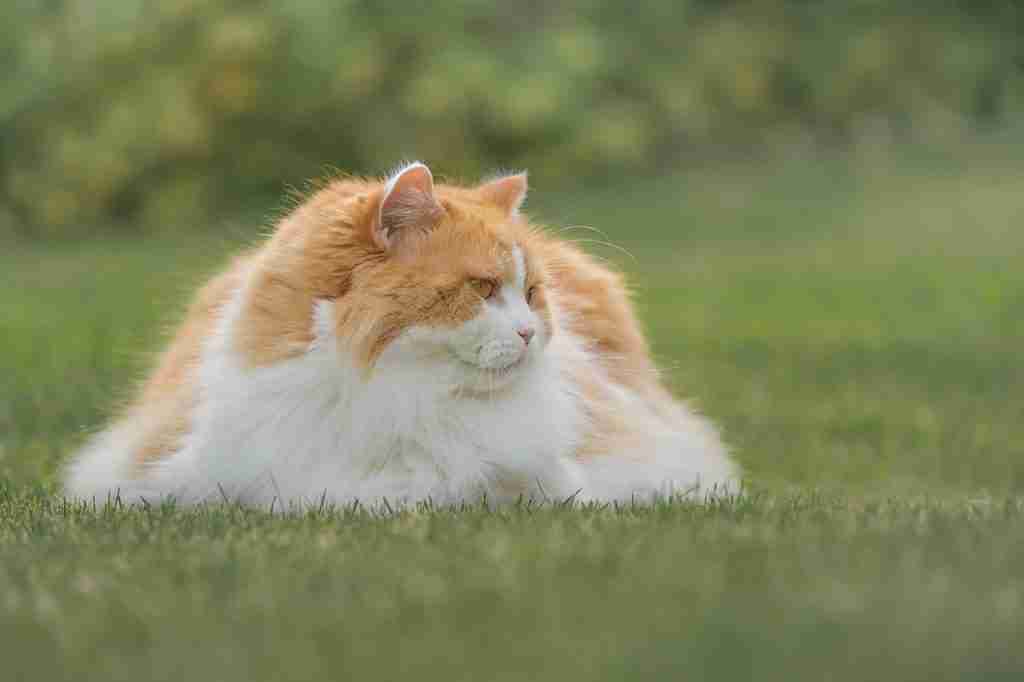
In terms of coat patterns, the British Longhair comes in either solid color coat, bi-color coat, tabby coat, colorpoint coat, tortoiseshell pattern, tortie and white (calico), smoke, silver-tipped (chinchilla) and a variety of tabby and tortie pointed coats! Basically, the variety is tremendous!
The solid, or self coats, come in recognized colors of jet black, white, blue (grey), deep chocolate, red, cream, lilac, cinnamon, and fawn. White-coated variants come with three recognized eye colors – blue, orange, and odd-eye.
Tabby coat British Longhair cats are acceptable in either spotted, ticked, classic, or mackerel tabby patterns. They have a wide range of colors to these patterns ranging from black and silver, cream and silver, chocolate, fawn and orange or red.
Tortoiseshell British Longhairs can be either the full black and red tortie or manifest as dilute torties with blue and pale creams as can calico variants (tortie and white).
Bicolor – any solid color and white – is usually acceptable. The common bicolor coats are black and white, blue and white, red and white, chocolate and white, lilac, cinnamon, and fawn variations all accompanied by white as the secondary color.
All these basic color options – black, red, chocolate, fawn, cinnamon, cream, blue, and tortie also come as a smoke variant where the top of the hair is colored and the hair nearer the skin is colorless.
Then there are the chinchillas and colorpoints – which are available as variations of all the above common patterns. With the British Longhair coat pattern and color is not a narrow choice like with some of the blue cat breeds!
Health Issues and Care
The average lifespan of these cats is usually around 12 to 16 years. They are susceptible to the same illnesses that their shorthaired relatives undergo and suffer through during these years.
One of the most prominent problems is obesity. Because British Longhairs would rather lounge on your lap or couch all day and are not interested in moving around as much, they are prone to gaining weight.
Another disease that they tend to develop is polycystic kidney disease. This is hereditary and is common within both parent breeds, British Shorthair and Persians. Due to this disease, kidney cysts may develop within the early years. Fortunately, it is easy to detect through an ultrasound.
British Longhair cats may also develop cardiac and heart diseases. One of the common ones is hypertrophic cardiomyopathy (HCM) which is untreatable and often fatal.
It is also detectable through ultrasound, but even early diagnosis cannot relay in a treatment plan. They are excluded from breeding, and the best vets can make an attempt for these cats to still live a long life.
These are some of the care routines that you should know when owning a British Longhair cat:
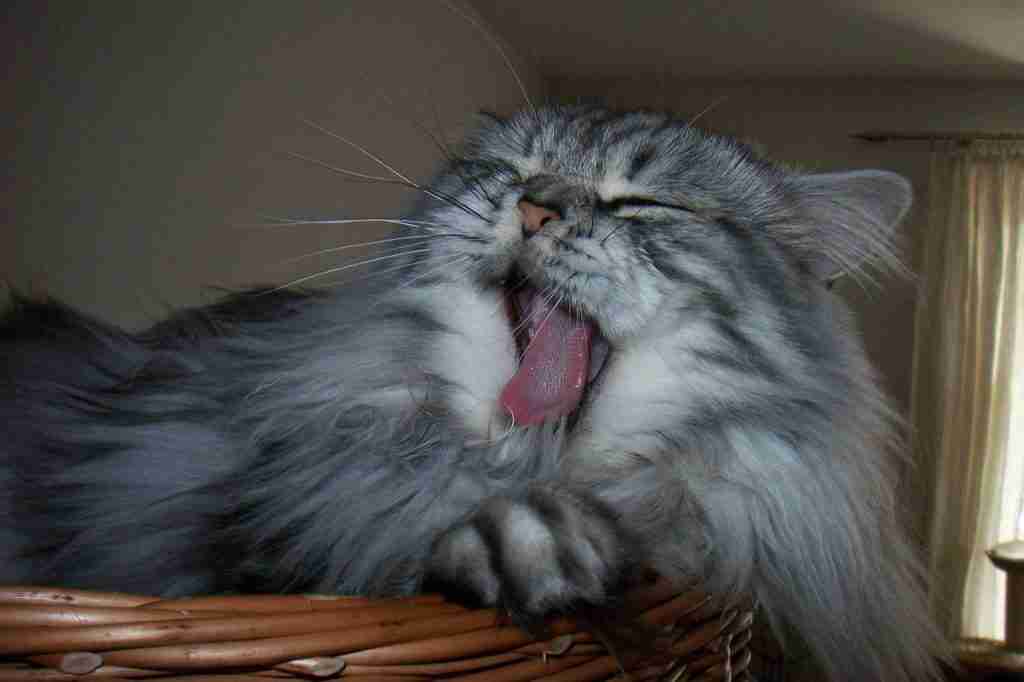
Nutrition Requirements
While these cats do not have any specific food and diet requirements, they still need to maintain a balance of everything. Cat food containing high protein, fat, small amounts of carbs, and essential vitamins and minerals are perfect. Good quality wet cat food will nourish and maintain the beauty and health of their coats.
Since these cats are prone to hairballs due to their long hair, you may need to give them specialist wet food or kibbles to help eliminate them from time to time – but these are not considered specialist foods from a price point. Wet food will often be enough to keep hairballs at bay as the moisture in the food keeps everything lubricated!
All of the foods should be given in moderation, avoid free-feeding a British Longhair, and go for fixed meal times! Base their diet on age and level of daily exercise to avoid obesity. If there are health risks of kidney cysts or HCM, you have to be especially careful to monitor their diet.
Exercise and Training
British Longhair cats should have ample exercise and playtime. You may have to encourage them with a variety of toys as they have a reputation for being reluctant when it comes to activity. Instead of getting picked up, they are more comfortable when you meet them on the floor.
You can use their favorite play accessories and toys, such as balls, false prey, or even laser pointers. If they had any favorite activities as a kitten, you could pick it up again to make them feel relaxed, familiar, and less reluctant.
These cats are very intelligent and can be trained as well. By consistently educating them and reproaching them when needed, you can instill certain behaviors and manners.
Grooming
As with any other longhair breed, you have to spend a little more time grooming these cats. Make sure to brush out any hairballs and knots from an early age so that your cats get used to it. A soft brush that does not pull the thick coat or scratches the skin harshly should work best for long-term cooperation!
Since cats mostly groom themselves, you do not have to worry much about them being clean. However, what you must worry about instead is ingesting hairballs and ways to eliminate them naturally. But that is a simple process too.
After each grooming session, remember to treat them only with high-quality, sugar-free, or plant by-products.
How Much Do British Longhair Cats Cost?
Since the British Longhair is prone to some hereditary diseases, it is best to buy them from a reputable breeder.
Professional breeders would only mate cats under the guidelines of a breeding association, trying their best to mitigate the risks of any diseases.
Purebred cats can be very expensive and may cost you an amount between $1,000 to $2,500. You can look around shelters and welfare associations in hopes of adopting one although they are unlikely to be registered and certified.
Final Words
If you are looking for an adorable, cute-faced, affectionate little cat with long fur, then a British Longhair would be the best for you. They are perfect companions to have around if you want a pet that can fend for itself during most of the day but still want occasional love and affection.
So, if you have small children or an elderly in the family, a British Longhair would be a great addition to your family.
